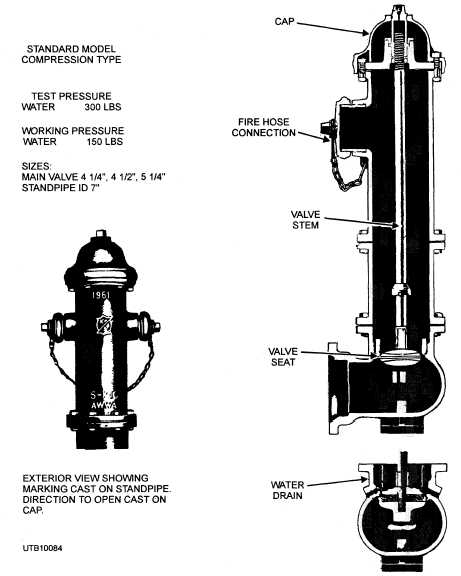
Figure 4-19. - Dry-barrel fire hydrant.
Figure 4-21 shows the proper method of installing and supporting fire hydrants.
FLUSHING AND TESTING
Of course, newly installed pipe must be tested for leaks by means of air or water. To make an AIR TEST, plug up all openings in the system, connect a source of compressed air to the system, and bring the pressure up slowly to the designed working pressure. Use a soapy water solution and cover each joint, then check for leaks. When a leak is present, you can detect the location by bubbles forming around the joint from the escaping air. When a leak is discovered, mark each spot with chalk or soapstone. DO NOT, AT THIS TIME, ATTEMPT TO REPAIR THE LEAK. After the line has been tested completely, relieve the pressure from within and repair the joint. Repeat the testing and repairing procedures until all the leaks have been located and repaired.
The procedure for making a WATER TEST is similar to that used for an air test. Water is used instead of air, and you do not use a soapy water solution to cover the joints. The pipe is filled with potable water, and pressure is applied and maintained by means of a hand pump. See that no air has been retained in the pipe being tested. Let it stand under operating pressure from 4 to 8 hours and inspect for leaks and maintenance of pressure during this period.
Q10. What department is responsible for selection of fire hydrants to be used in a system?
Q11. What are the two types of fire hydrants?
Continue Reading
